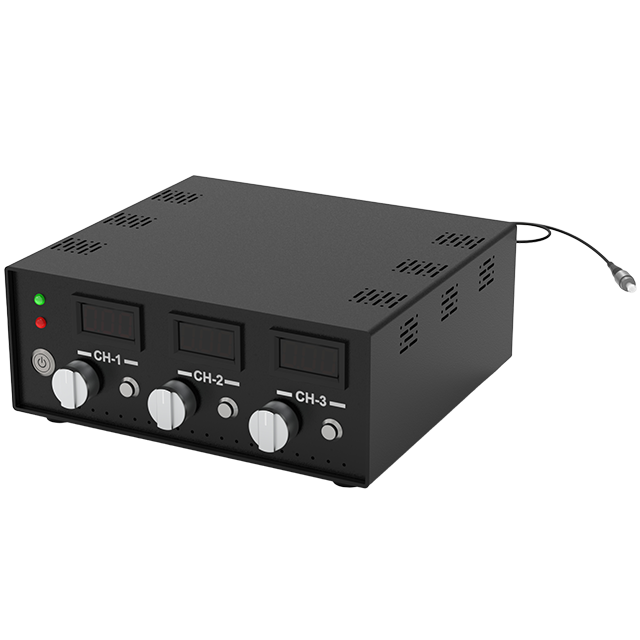Laser Systems
A laser system is essentially a closed-loop system of "energy excitation - beam control - application output". Its core consists of five core functional modules, which work collaboratively through standardized interfaces to form a flexibly configurable technical architecture. Laser systems have evolved from laboratory tools into core equipment supporting fields such as precision manufacturing, scientific research and exploration, and medical and health care.
VLFL-405 Series Fiber-Coupled Laser Systems
An integrated laser system with "full power coverage and multi-scenario adaptation"
- Fully integrated system design, plug-and-play
- High-precision performance control with excellent stability
- Strong scene adaptability and flexible customization
- Long lifespan and low maintenance, with low usage cost

VLFL-405 Series Fiber-Coupled Laser Systems
- Multimode Fiber (MF), with core diameters of 50/100/200μm optional, numerical aperture of 0.22, and interfaces of FC/SMA905/SC/ST optional
- Low-to-medium power multimode basic model, suitable for conventional optical transmission scenarios
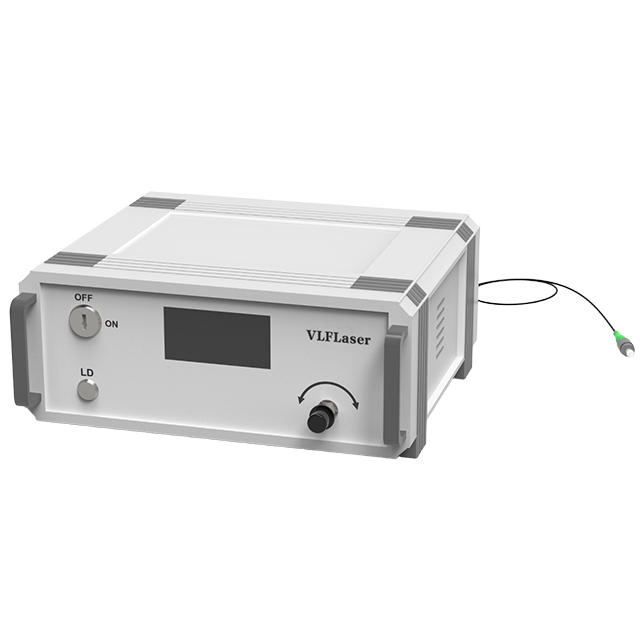
VLFL-405 Series Fiber-Coupled Laser Systems
- Multimode Fiber (MF), core diameter options of 50/100/200μm, numerical aperture 0.22, interface options of FC/SMA905/SC/ST
- Medium-power multimode model with a narrower spectral width (2nm), suitable for scenarios with slightly higher requirements for wavelength accuracy
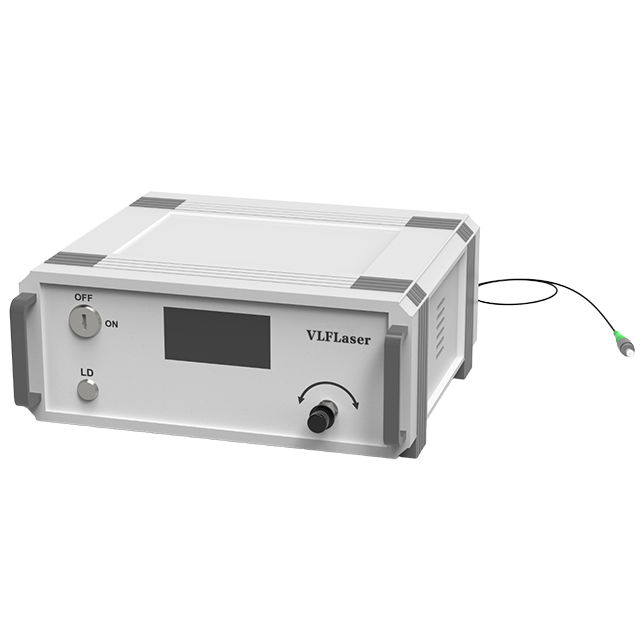
VLFL-405 Series Fiber-Coupled Laser Systems
- Multimode Fiber (MF), core diameter 50/100/200μm optional, numerical aperture 0.22, interface FC/SMA905/SC/ST optional
- Medium and high power multimode model, balancing power and wavelength stability, suitable for medium energy demand scenarios

VLFL-405 Series Fiber-Coupled Laser Systems
- Multimode Fiber (MF), core diameter 50/100/200μm optional, numerical aperture 0.22, interface FC/SMA905/SC/ST optional
- High-power multimode model with a narrow spectral width (2nm), balancing high energy and wavelength accuracy
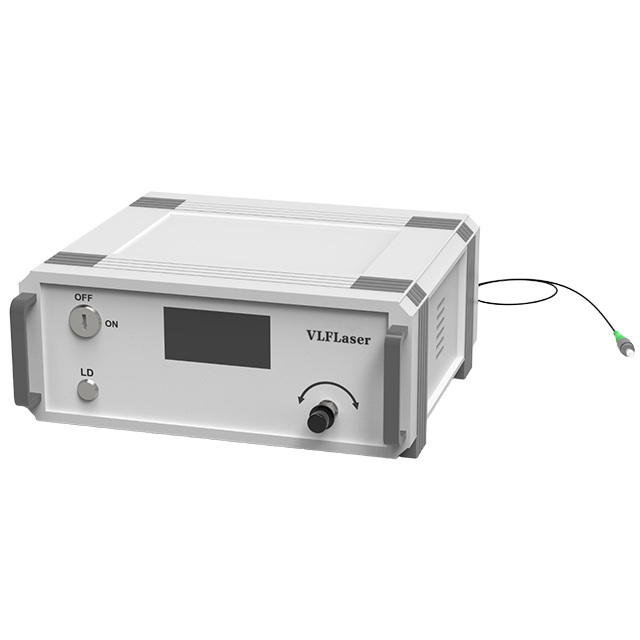
VLFL-405 Series Fiber-Coupled Laser Systems
- Multimode Fiber (MF), core diameter 50/100/200μm optional, numerical aperture 0.22, interface FC/SMA905/SC/ST optional
- Ultra-high power multimode model, series power peak, suitable for scenarios with high energy density requirements
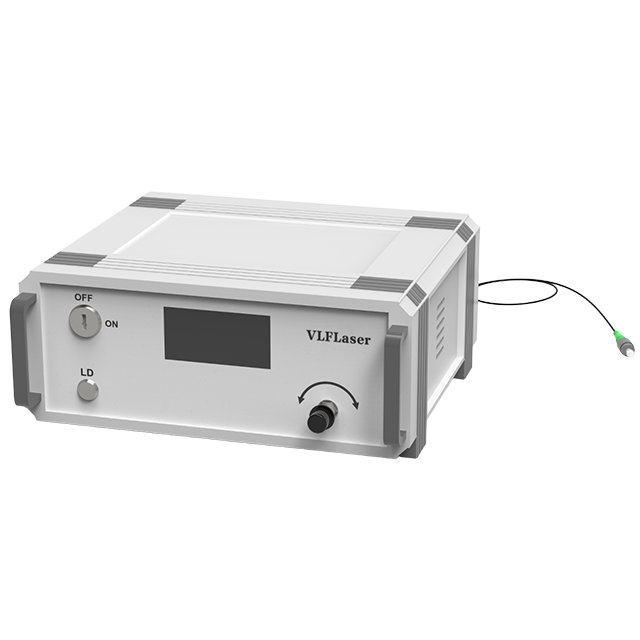
VLFL-405 Series Fiber-Coupled Laser Systems
- Polarization-Maintaining Fiber (PM), core diameter 3μm, numerical aperture 0.12, interface FC/APC (fixed)
- Low-power polarization-sensitive model, extinction ratio 18dB, suitable for precision scenarios that require maintaining polarization state
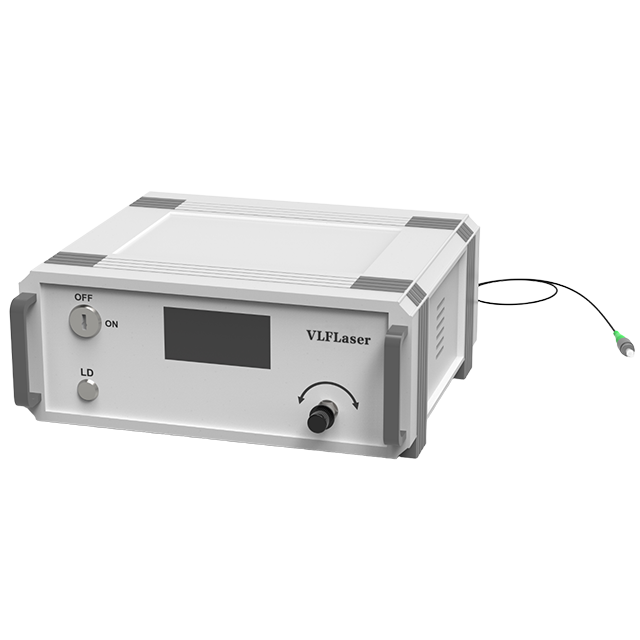
VLFL-405 Series Fiber-Coupled Laser Systems
Single-mode fiber (SF), core diameter 3μm, numerical aperture 0.13, interface FC/PC (fixed)
Low-power, high beam quality model. Single-mode fiber ensures Gaussian spot, suitable for high focusing accuracy scenarios
VLFL-450 Series Fiber-Coupled Laser Systems
An integrated laser system that is "exclusive to the near-ultraviolet to blue light band, covers full power range (30~3500mW), and supports multi-scenario customization"
- High integration and ease of use
- High-precision performance control
- Strong customization and wide adaptability
- Long service life and low maintenance cost
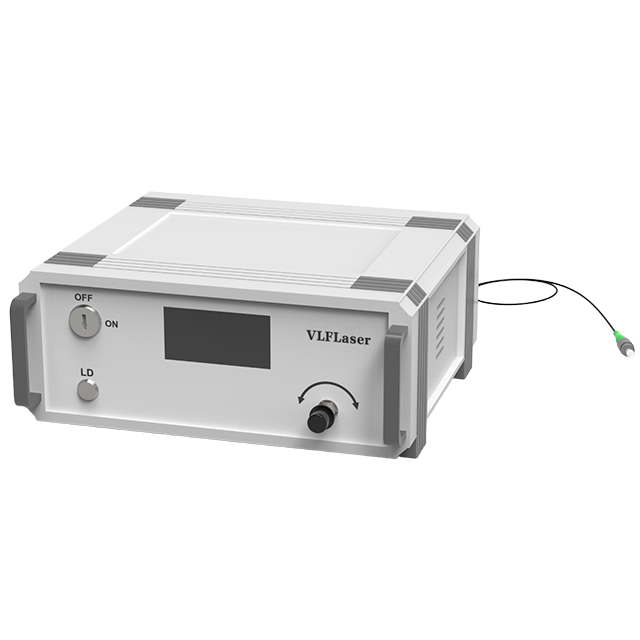
VLFL-450 Series Fiber-Coupled Laser Systems
- Multimode Fiber (MF), core diameter 50/100/200μm (optional), numerical aperture 0.22, interface FC/SMA905/SC/ST (optional)
- 445nm medium and high power multimode model, suitable for scenarios requiring "shorter blue light wavelength + medium energy" (such as excitation of specific photosensitive materials)
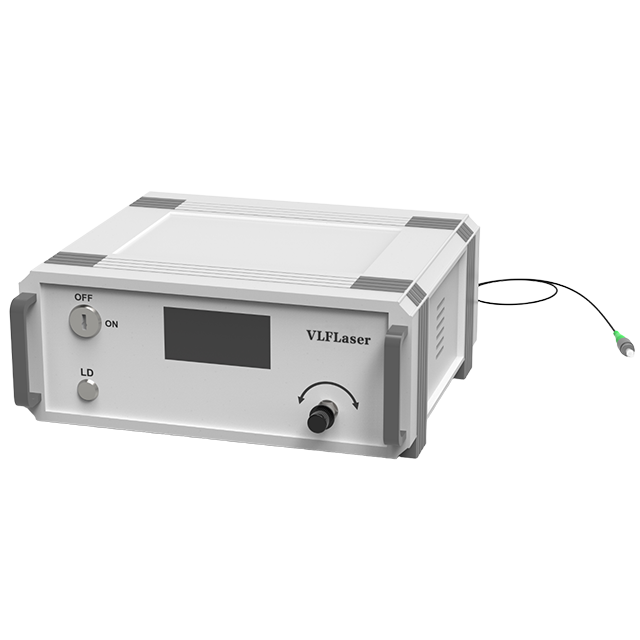
VLFL-450 Series Fiber-Coupled Laser Systems
- Multimode Fiber (MF), core diameter 50/100/200μm (optional), numerical aperture 0.22, interface FC/SMA905/SC/ST (optional)
- 450nm low-power multimode basic model, suitable for regular blue light detection and low-energy excitation scenarios (such as fluorescent labeling experiments)
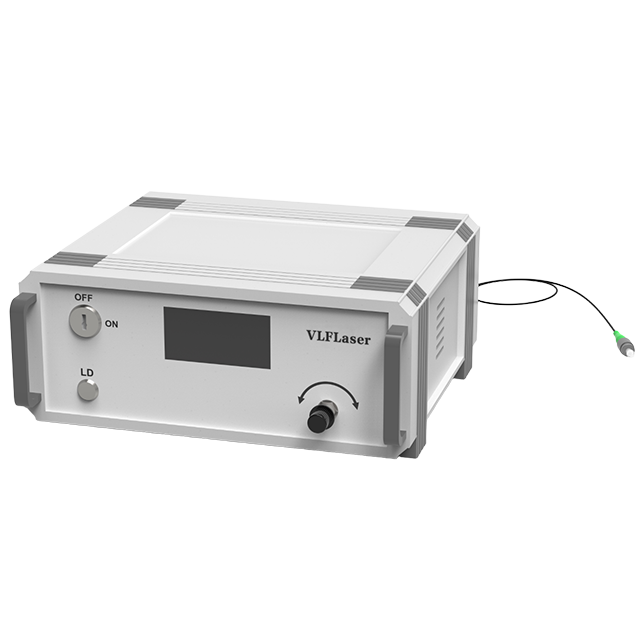
VLFL-450 Series Fiber-Coupled Laser Systems
- Polarization Maintaining Fiber (PM), core diameter 3.5μm (fixed), numerical aperture 0.12, interface FC/SMA905/SC/ST (optional)
- 450nm low-power polarization-sensitive model, with 16dB extinction ratio to maintain stable laser polarization state, suitable for polarization-dependent experiments

VLFL-450 Series Fiber-Coupled Laser Systems
- Single-mode Fiber (SF), core diameter 3.5μm (fixed), numerical aperture 0.13, interface FC/SMA905/SC/ST (optional)
- 450nm low-power, high-beam-quality model, with single-mode fiber outputting Gaussian spot, suitable for high focusing precision scenarios (such as confocal microscopy)
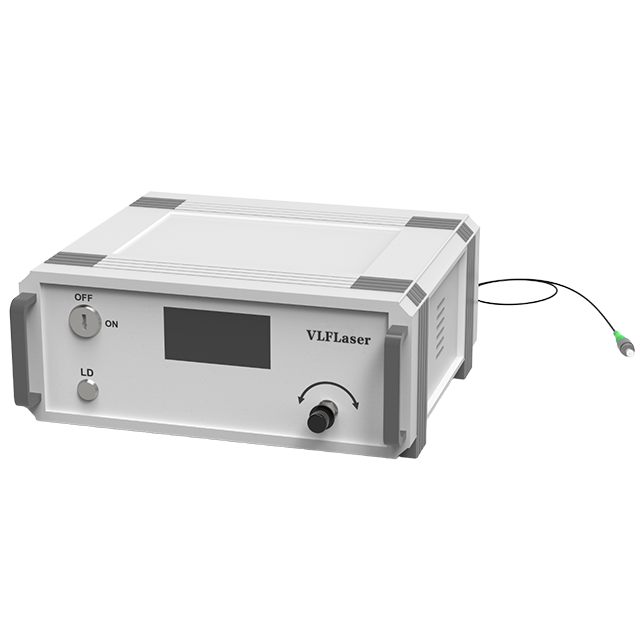
VLFL-450 Series Fiber-Coupled Laser Systems
- Multimode Fiber (MF), core diameter 50/100/200μm (optional), numerical aperture 0.22, interface FC/SMA905/SC/ST (optional)
- 455nm ultra-high power multimode model, the power ceiling of the series, suitable for high energy density demand scenarios (such as high-power 3D printing, material surface modification)
Three-wavelength multimode fiber white light laser system
A professional-grade white light laser system featuring "three-wavelength integration, high customization, and compact design"
- Three-wavelength integrated design, adapting to multi-band coordination requirements
- Fiber parameters are highly customizable, with strong scene adaptability
- Software control + high stability, with convenient operation and reliable results
- Compact integration + wide environmental adaptability, flexible deployment
Four-In-One Fiber-Coupled Laser System
A professional-grade laser system featuring "four-band integration, single-mode high beam quality, and compact design"
- Four-band integrated design simplifies the deployment of multi-wavelength scenarios
- Single-mode fiber offers high beam quality, suitable for precision scenarios
- High stability + intelligent control, ensuring reliable data and convenient operation
- Compact integration + wide environmental adaptability, flexible deployment

Four-In-One Fiber-Coupled Laser System
Based on wavelength characteristics and parameter matching scenarios:
Optogenetic experiments: The 405nm near-ultraviolet band can activate specific light-sensitive channel proteins (such as certain rhodopsin proteins), and 450nm blue light can activate commonly used light-sensitive proteins like ChR2, which is suitable for research on neural cell light control in universities and research institutions.
Multicolor fluorescence imaging: 450nm (blue light), 520nm (green light), and 638nm (red light) can respectively excite different fluorescent dyes (such as FITC, Cy3, Cy5) for multi-label fluorescence imaging of biological tissues, suitable for medical research and cell biology research scenarios.
Near-ultraviolet-visible light material detection: 405nm near-ultraviolet can be used for material ultraviolet absorption spectrum analysis, and 450~638nm visible light can be used for material reflection/emission spectrum detection, suitable for characteristic research on photosensitive materials and semiconductor materials in material science laboratories.
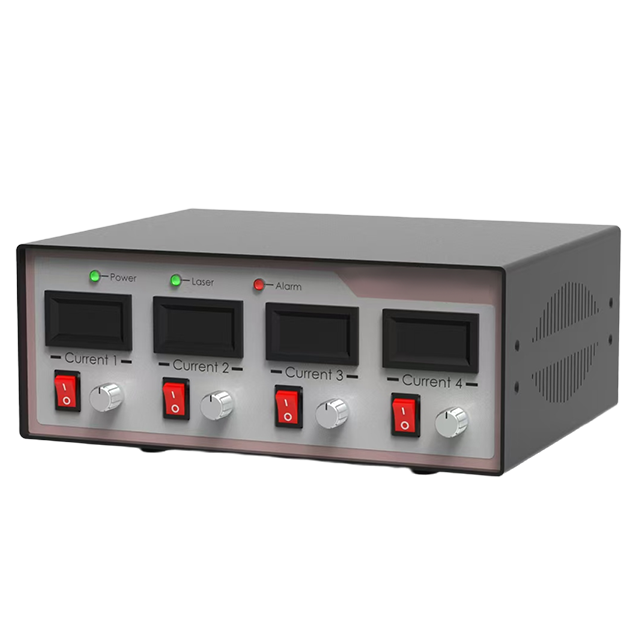
Four-In-One Fiber-Coupled Laser System
Based on wavelength characteristics and parameter matching scenarios:
Raman Spectroscopy Analysis: The 785nm near-infrared band can suppress sample fluorescence interference, making it suitable for qualitative and quantitative Raman spectroscopy detection of organic compounds, biological tissues (such as tumor sections), and food components in research institutions and testing organizations.
Deep Biological Imaging: The 785nm near-infrared light has a better penetration depth in biological tissues than visible light, and can be used for multi-band imaging research of deep tissues (such as subcutaneous tissues), which is suitable for biomedical research scenarios.
Visible Light Fluorescence Detection and Material Analysis: 488nm (blue light), 520nm (green light), and 638nm (red light) can excite conventional fluorescent dyes, and are used in in vitro diagnostic equipment (such as immunofluorescence detection) and reflection/absorption spectrum analysis in the visible light band in materials science.
